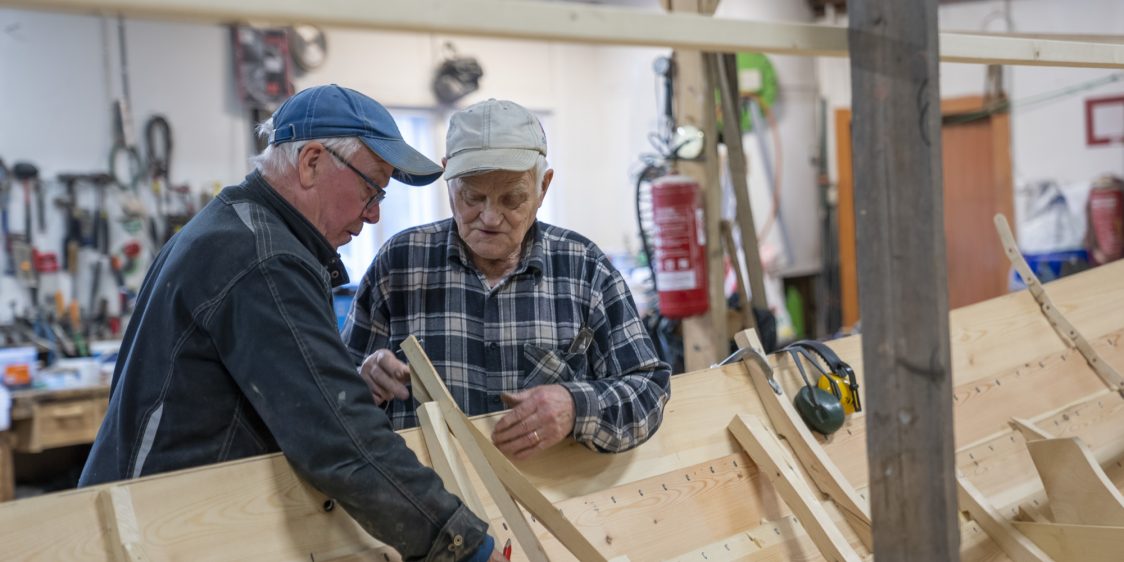
Nordic clinker boat tradition inscribed to UNESCO Representiative List of the ICH
The Intergovernmental Committee convening in Paris, inscribed the Nordic clinker boat tradition to UNESCO Representative List. The first multinational inscription has already started many kind of cooperation within the Nordic countries.
The application was the first multi-national file made by the Nordic countries, and it also included Åland and Faroe Islands. Norway was in charge of coordinating the application process. Furthermore, a few hundred operators in the sector were involved in the process, including boat builders, associations, museums and education providers. In Finland, 19 actors involved in wooden boats joined their forces as part of this first ever joint Nordic UNESCO application. All Nordic ministers of culture signed the application.
‘Being added to UNESCO’s list gives recognition to the Nordic handicraft tradition and work towards safeguarding the wooden boat heritage in the northern regions. Clinker boats are making the history of all Nordic countries more visible and allowing us to illustrate it to the rest of the world. This will serve as a fantastic foundation for further cooperation,’ says wooden boat enthusiast Bosse Mellberg, who represented communities in the coordination of the application process.
In fact, the application process has already led to the initiation of various projects connected to this tradition around the Nordic countries. For example, the Finland’s wooden boat builders’ association has initiated two new projects for safeguarding the tradition.
Coastal and maritime cultural heritage
Wooden clinker boats are a special type of Nordic boat that have been built in Finland and elsewhere in the north for thousands of years. Wooden boats have been of great significance to marine transport in all Nordic countries, connecting people from coast to coast for generations, and the clinker boat tradition is a key part of Finnish and Nordic cultural heritage and coastal culture.
Clinker boats are part of the entire nation’s heritage in Finland: hundreds of thousands of these boats can be found at summer houses to be used for rowing, sailing and fishing. However, Finland only has around 50 professional boat builders. That means that in the long run the boat building skills and knowledge on how they are used may be in danger.
‘We must ensure that we retain our boat building skills. A well-built wooden clinker boat is lightweight, easy to handle and ecological, even though these boats have undergone changes over time. The recognition received from UNESCO will help protect this valuable culture-historical heritage and, above all, develop it further,’ says the chair of Finland’s wooden boat builders’ association (Suomen puuveneveistäjät), Jari Vanhatalo.
Background: UNESCO Convention and lists
Finland ratified the UNESCO Convention for the Safeguarding of the Intangible Cultural Heritage in 2013. Finnish Heritage Agency is responsible for implementing the Convention, and it coordinated both application processes. Reports on how the elements inscribed have been safeguarded are submitted to UNESCO once every six years. The Ministry of Education and Culture is in charge of implementing and reporting on the Convention to UNESCO.
The Convention promotes the safeguarding of intangible cultural heritage and makes people’s, communities’ and groups’ cultural heritage more visible. Intangible cultural heritage may include e.g. performing arts, craft skills, oral traditions, social customs or knowledge, skills and practices related to nature and the universe.
As part of the Convention, living heritage is inventoried both at a national and a global level. UNESCO maintains two intangible cultural heritage lists and a register of best practices. The aim of the lists is to increase the visibility of living heritage and share good practices between countries. By the time of the currently ongoing UNESCO meeting, the lists contained a total of 584 items from 131 countries. A further 60 applications are being processed this year. In Finland, examples of living heritage are collected on the Wiki-Inventory for Living Heritage.
Multiple forms of intangible cultural heritage are connected to wooden clinker boats, both in the way they are built and the way they are used. Pictured is boat builder Marko Vanhatalo. Image: Jaska Poikonen
Inquiries
Senior Adviser Leena Marsio, Finnish Heritage Agency, leena.marsio@museovirasto.fi, tel. +358 (0)2 9533 6017
Clinker boat expert Bosse Mellberg, mellbergbosse@gmail.com, tel. +358 (0)40 5643 975
Chair Jari Vanhatalo, Finland’s wooden boat builders’ association, info@miilubots.fi, tel. +358 (0)50 3223 950
UNESCO lists of Intangible Cultural Heritage
Other news about intangible cultural heritage in Finland
More information about intangible cultural heritage in Finland